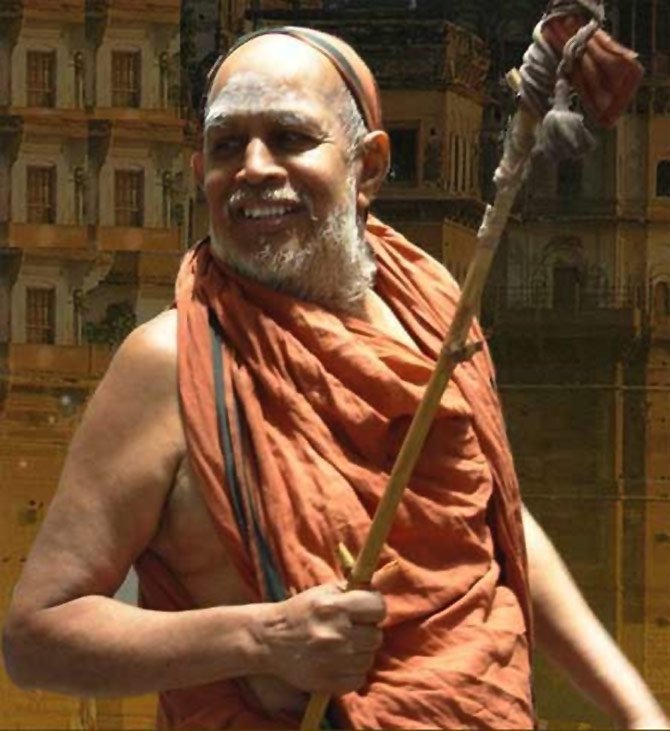Shri Jayendra Saraswati, The Reformist Shankaracharya Who Curbed Conversions In Tamil Nadu – Meenakshipuram Mass Conversion To Islam Case. (Part-I)


The 59th pontiff of the Kanchi Kamakoti Math, Jayendra Saraswati ji was the peoples’ Shankaracharya, a pioneer who travelled far and wide to connect with the masses, specially the downtrodden sections of Hindu society, the Dalits for a cohesive society to save it from predatory Abrahamic conversion industries.
The great Swamiji suffered a lot of criticism, ridicule and even had to endure a totally fabricated murder case foisted on him as his followers and admirers grew among the masses as a peoples’ Guru and an anti-conversion bulwark in Tamil Nadu.
The year was 1981 and date February 19th, a small village hamlet named Meenakshipuram in Tirunelvelli district of Tamil Nadu shocked the Hindu society across India, when 180 villagers converted en masse to Islam. This woke up the whole country to the ugly fact of illegal conversions by entrapping vulnerable sections of Hindu society through allurement, exploiting the chasms within the Hindu fold.
This incident sparked a country wide debate and demand for strict anti-conversion laws against illegal conversions through false monetary promises and allurement. Around 1,100 people had converted to Islam in Meenakshipuram. The village was renamed reportedly as Rahmat Nagar.
Notably, Meenakshipuram had a history of caste violence this was exploited by Islamists with funds from the Islamic Gulf nations. As stated in page30 of the Politics of Conversion, by Devendra Swarup, (1986) a resident named Ayyappan is said to have refused a cash gift of Rs.500 (translating to about 20,000/- today) in return for conversion to Islam. Some newspapers also reportedly carried a photo of a currency note from a Gulf country being distributed in Meenakshipuram for conversion.
The newly formed BJP party then raised protests against the mass conversion in Meenakshipuram, even Atal Bihari Vajpayee visited the place with other political leaders and Hindu organisations to take stock of the illegal conversion activities there.
Jayendra Saraswati, was then the junior pontiff of the Kanchi Muth . The young Swamiji, personally took it upon himself to start visiting all the remote villages to connect with the Dalit community. The holy Swamiji first started by personally going to the marginalised Dalit slum clusters around Kanchipuram Math and started engaging them with the larger Hindu fold. He started many charity programs for the upliftment of Dalits and himself established many Mandirs in Dalit colonies.
Soon he travelled very widely to all nooks and corners of Tamil Nadu in his mission to make a strong and cohesive Hindu society with pride in its cultural and religious heritage. The holy seer allotted majority of the donations received by the Kanchi Math in setting up schools, hospitals, colleges, veda paatshalas and funding education of all poor Hindus irrespective of their Varna and Jati. He launched a social service movement called the Jan Kalyan in the mid 1980s.
His efforts started bearing fruit as many of the Dalits of Meenakshipuram and elsewhere started coming back to Sanatan Dharma. Just after five months of the mass conversion function, in July 1981 itself many of the converts re-embraced Hinduism. By 1991, 900 of the 1000 odd converted Dalits came back to their original fold. Many even claimed that they were cheated by the converters as the promises made to them for conversions were not fulfilled by the Islamists.
The holy Swamiji was instrumental in influencing J Jayalalitha to pass the anti-conversion law in Tamil Nadu which raised the heckles of the anti-Hindu lobby. This story is part of a series on Shri Jayendra Saraswati Swamiji who was sullied and attacked by Islamists, Christian missionaries, communists and a section of dubious HINOs (Hindu In Name Only) claiming to be ‘rationalists’ with political interests in keeping Sanatanis divided. The holy Swamiji lived his earthly life in trial by fire while holding the Dharma Dandam (Staff) very high.
With inputs from Print, India Today ,Wikipedia, Politics of conversion by Devendra Swarup.
Image sourced from internet.
DISCLAIMER: The author is solely responsible for the views expressed in this article. The author carries the responsibility for citing and/or licensing of images utilized within the text.
